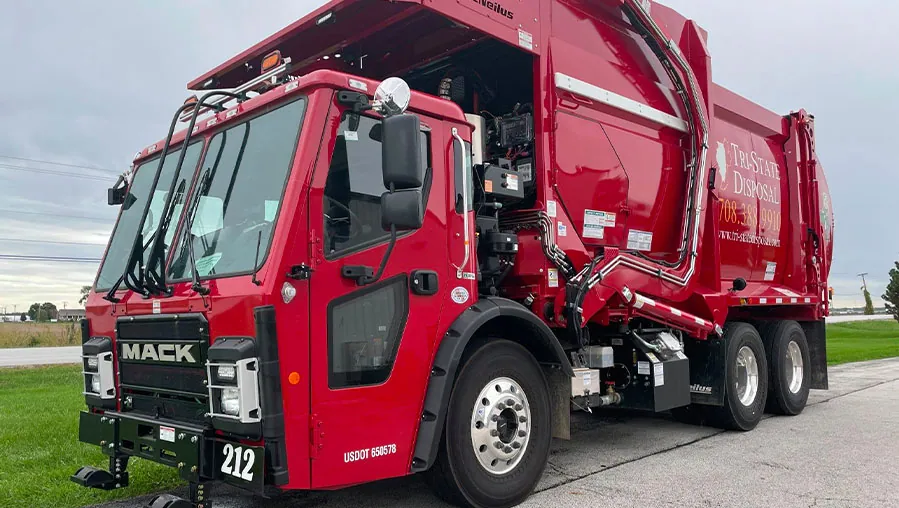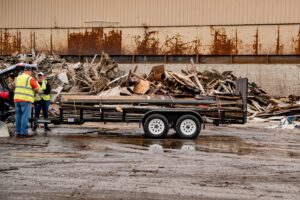Waste transfer stations are an important part of the waste management process. As a link between people who generate waste and landfills, transfer stations provide a key service for communities. You need to have a general understanding of this integral part of the waste cycle if you want a better way to handle the waste you generate.
Read on to learn more about what waste transfer stations do, how they help reduce the amount of waste that ends up in landfills, and when it makes sense to use a transfer station.
What Waste Transfer Stations Do
As mentioned earlier, waste transfer stations are essentially an intermediate point between sources of waste and landfills. These facilities accept solid waste from residential, commercial, and industrial sources. The wide range of services you can expect at a waste transfer station varies depending on the facility but typically includes waste screening, treatment, and disposal.
During the screening process, facility attendants sort the waste into different categories to separate items for reuse, recycling, and landfill disposal. Treatment mainly involves compaction, which aims to reduce the volume of materials, so they take up less space in the landfill.
The station typically consists of a tipping floor where facility attendants unload waste from the trucks, a storage area for the waste, and a scale house. The tipping floor is usually made from concrete or asphalt and may have equipment like compactors and crushers to prepare the waste for transit.
The facility staff first sort and compact the waste with these machines before they temporarily store and transport the waste to the final destination. The compactors compress waste into a smaller size to allow for efficient storage of the compressed waste. These machines feature a ram that compresses the waste into a container to reduce its volume.
Crushers basically crush bulk solid waste into smaller pieces that are easier to transport. Their design is strong enough to withstand the force of crushing large, heavy waste items.
How Waste Transfer Stations Work
Waste transfer stations are designed with safety in mind. They must meet all environmental regulations so that materials do not leak into nearby water systems. Remember that these facilities handle different types of waste, even hazardous waste, so safety is paramount.
Once waste materials arrive at the facility, an attendant uses weighing scales to provide a representation of waste content to keep accurate records of incoming material types and amounts. The facility staff then sorts the waste into different containers for disposal or recycling purposes.
Recyclable materials may include paper, plastic, glass, and metal. The facility then sends these materials to recycling centers that turn the recycled waste into raw materials for new products. Non-recyclable materials often end up in a landfill or other approved waste disposal sites for proper containment and management.
When to Use a Waste Transfer Station
A waste transfer station is one of the best ways to ensure proper waste management, especially if you generate a large volume of waste. For instance, if you own a business that produces large amounts of solid waste or hazardous materials but not enough to hire a dumpster or a waste collection service, a transfer station might be the best way to properly dispose of your waste.
Transfer stations are also perfect for warehouse cleanouts, large construction projects, and yard cleanups. But remember to check your local transfer station’s regulations to make sure you can use the facility for the type of waste you need to dispose of.
You might also need the services of a waste transfer station if you undertake major renovations on your home, where you’re likely to generate large amounts of demolition waste in a relatively short time. You can’t always place these materials in normal trash cans or recycle them yourself, so a transfer station might actually be an excellent way to properly dispose of the waste.
Finally, a transfer station might be the ideal disposal method if you want to get rid of large items like old furniture or appliances. Most transfer stations usually accept these large items, as well as hazardous materials like batteries, motor oil, and paint. This disposal option might appeal more to you if you don’t have room to hold a large dumpster rental on your property to hold these items.
Why Waste Transfer Stations and Waste Management Are Important
The importance of proper waste management solutions cannot be overstated. Without them, this beautiful planet would quickly become overburdened with trash and debris, a precursor for serious environmental issues down the line. In fact, waste transfer stations are just one piece of the puzzle that you can combine with other waste management options, such as curbside pickup and recycling centers.
So if you want a better way to manage your waste, reach out to Tri-State Disposal to see how we can help. We offer a variety of services to help you manage your waste properly, including onsite and offsite transfer station solutions.




